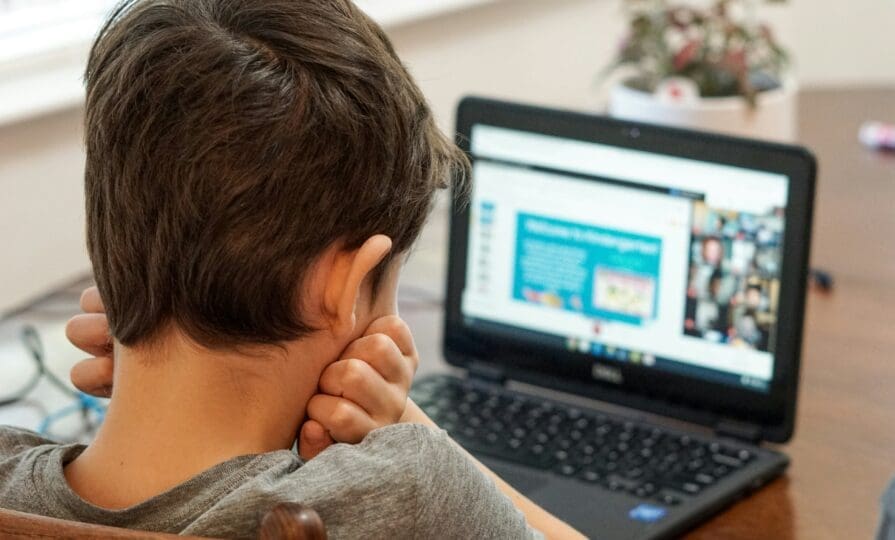How safeguarding professionals can help keep children safe online
By Jess Lane, Head of School Attendance & Safeguarding at One Education

Register to get 1 free article
Reveal the article below by registering for our email newsletter.
Want unlimited access? View Plans
Already have an account? Sign in
Schools have always acted as a frontline defence for children’s safety and wellbeing, taking measures to protect children against threats within the familiar boundaries of the classroom, home environment, and wider community. But today, safeguarding risks are emerging in an entirely new and complex landscape – the digital world.
The digital world is vast, fast-moving, and often anonymous. This makes it far more difficult to spot the signs and indicators of harm that we might usually see in a physical environment. However, as children increasingly spend more time on social media and other online platforms, it’s clear that safeguarding practice must evolve to reflect this shift.
A recent report published by Tes reveals the pace and scale of change, highlighting widespread concerns over the online harms that children face. In a survey of 1,949 school staff and governors, 92% say that their biggest challenge is monitoring online behaviour outside of school, rising from 88% last year. Many schools have taken steps to address this issue by teaching digital literacy and raising awareness of online risks. However, most online activity takes place on private devices beyond the school’s supervision. As a result, safeguarding concerns often continue to fall under the radar – until the damage has already been done.
Cyberbullying stands out as the most common risk with 66% of educators reporting instances of online bullying in their schools. But children are exposed to a wide spectrum of harms, including exposure to harmful content on topics such as eating disorders, self-harm and suicide, as well as misinformation and extremist ideologies.
Schools have also seen a proliferation of digital threats that are entirely unprecedented, such as the rise of deepfake imagery and online exploitation, which would have been inconceivable even just a few years ago. In one year alone, the Internet Watch Foundation (IWF) found a 380% increase in AI-generated child abuse imagery. The IWF reports that children under the age of 10 are now being groomed online ‘like never before.’
We know that children find it difficult to talk about the harms they have experienced, whether in-person or online. It is rare that children will verbally disclose abuse to parents, peers, or staff in schools. Statutory guidance Keeping Children Safe in Education (KCSIE) clarifies that:
All staff should be aware that children may not feel ready or know how to tell someone that they are being abused, exploited, or neglected, and/or they may not recognise their experiences as harmful. For example, children may feel embarrassed, humiliated, or are being threatened.
With the rise of online harms – which often leave no physical trace and can be difficult to articulate – it has never been more important to raise the profile of trusted adults in schools: individuals who children know they can approach and be listened to without judgement. Alongside this, staff must embrace a mindset of professional curiosity and a willingness to ask questions when something doesn’t feel right.
Crucially, this means paying attention and being attuned to small changes in mood or behaviour. Consider the following questions:
- What is different about the child?
- Do they seem happy/sad/withdrawn?
- Has their appearance changed?
- What is their school attendance like?
- Have they disengaged with things they previously enjoyed?
- What are the family circumstances?
- Are there external factors influencing their behaviour?
- Are their friends worried about them?
- Have they suffered adverse childhood experiences?
In a world where abuse can be hidden behind screens, safeguarding must be proactive, ensuring that staff are not only ready to listen, but to advocate for children who may not have the words to speak for themselves.
In light of recent findings, experts have called for collaborative, multi-layered approaches to future safeguarding strategies. But in the face of overwhelming demand, many external support services have raised the thresholds for intervention. In fact, 50% of educators identified difficulty accessing external services as the biggest barrier to effective safeguarding.
The Children’s Wellbeing and Schools Bill aims to enhance multi-agency safeguarding by giving schools greater influence over decision-making alongside police, health and local authorities. But until then, schools are increasingly stepping in to fill the gaps, whilst lacking the resources or expertise to manage complex cases.
This growing responsibility underscores the need for high-quality safeguarding training that equips school staff with the knowledge, confidence, and professional judgement to ensure concerns can be effectively resolved. Currently, 37% of school staff rate their safeguarding training as inadequate, whilst 7% received no training at all. Alarmingly, less than half have received specific training on how to manage online safeguarding incidents. Until we invest in high-quality training for all members of staff in school, there is a risk that vital signs and indicators of abuse will remain unnoticed, and support for vulnerable children will be delayed.
As online risks continue to evolve with new platforms, trends, and technological advances, safeguarding cannot afford to stand still. Safeguarding professionals must continue to evolve our practice by maintaining vigilance, visibility, and a readiness to listen to the voice of the child – whatever that sounds, looks or feels like – and acting in their best interests.

